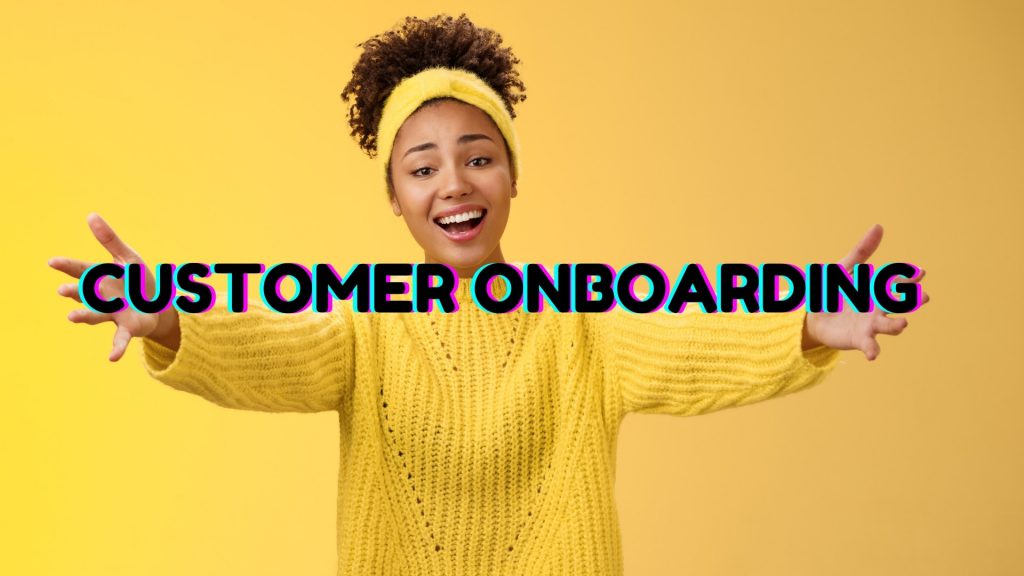How to Improve Customer Retention
OppZone
Ensuring customer retention is among the highest goals of each business. Therefore, the best service can be provided by updating the products and services. Customer continuity significantly and positively affects business development. An accurate marketing approach and efficient service are the key elements of having loyal customers. So, how is it possible? How can you retain customers? What are the strategies implemented for loyal customers? How can you implement efficient methods?

What Is Customer Retention?
Customer retention has a significant impact on the development of businesses. Retaining customers is through gaining your customers an understanding of continuity and preventing them from being attracted by other companies’ offers. Customer retention aims to protect your existing customers while providing satisfactory service.
For instance, Apple’s customer retention understanding significantly impacts its brand development. According to the research, Apple ensures customer retention with its product and service quality. iPhone, iPad, and iPods provide the best customer experience through the products’ design, interface, and camera.
What Are the Tools to Improve Customer Retention?
The profit you make from the customers also affects your marketing in acquiring new customers. Therefore, tools that help retain customers will critically contribute to your business development. We can list the ten tools that can help you improve your customer retention rate as follows:
CRM Strategy

CRM is a system that helps you efficiently manage your customer relations. A CRM platform tracks your customer journey to keep it under control. It directly affects customer support, marketing outputs, and customer satisfaction while personalizing the customer relations process during customer shopping journeys.
Customer Loyalty Programs
A customer loyalty program provides you with various ways to retain customers. It sends rewards, scores, or private messages to remind customers how valued they are in this collaboration. You can show this value also rewarding actions such as commenting, sharing posts on social platforms, and recommending to their close circle to increase your brand awareness.
Content Personalization Tool
Another key to retaining customers is personalization. Personalization makes your customers feel valued by creating a sense of gaining real experience. Addressing your customers by their name and remembering your previous interactions can enhance customer loyalty toward your brand. In addition, personalized content prevents inefficient time and effort management.
A/B Test
A/B test shows how to grab the customers’ attention through the customer’s purchasing process analysis to improve the customer experience. The visitor numbers on the A/B test page show how much time your customers spend on your website and contribute to the marketing aspect of your company, from notification of shopping processes to determining advertising strategies. Businesses that aim to retain sales and customers pave the way for their development through A/B tests.
Gamification
Gamification is among the tools to retain your customers. You can provide a gamification experience to enhance your customers and target audience’s sales process. Leveling actions such as badges, leaderboards, status, rewards, and status updates contribute to customers’ purchase continuity.
Customer Support & Service

Effectively delivered customer support directly impacts customer loyalty. Tools such as customer support live chat, self-service, help desk, and inbox are essential services to provide efficient communication. As a result, you find and solve customer pain points.
Effectively delivered customer support directly impacts customer loyalty. Tools such as customer support live chat, self-service, help desk, and inbox are essential services to provide fast and effective communication to your customer. As a result, customer support service effectively solves customer pain points and offers accurate communication by your business.
Exit Interviews and Surveys
If you can determine the points that cause a communication gap between your customers, you can identify suitable strategies to retain your customers. Here, you can benefit from exit interviews and surveys. Therefore, you can easily see the areas you need to improve and start your process. At this point, it is critical to analyze customer processes not to experience the same problems with your new customers.
Customer Retention KPIs

There are some KPIs to know for customer retention. These are:
1) Customer Retention Rate
Customer retention rate is the simplest metric to measure customer loyalty. You can identify your path by calculating the performance measurement rate of your business. For instance, you can choose a particular time to measure that.
Customer Retention Rate= (( NCE- NEW) / NCS)).100
NCE: Number of customers at the end of a period
NEW: Number of new customers acquired during that time
NCS: Number of customers at the beginning of the period
2) Repeat Purchase Ratio
Repeat purchase ratio (RPR) measures how many percent of your customers prefer your brand to purchase again in a particular period. This way, you can measure customer loyalty with the shortest route. You should start by determining the time interval.
Repeat Purchase Ratio = NRC / NTC
NRC: Number of returning customers in the period
NTC: Number of total customers in the period
3) Net Incremental Revenue
Net incremental revenue (NIR) exhibits the analysis of marketing investment return. It measures the earned income and expenses after a campaign. Since net incremental revenue is observable, it is an efficient measurement. That is calculated separately for the control and test. Formulas are:
Total Net Revenue = Qualifying Revenue – Incentive Costs
Incentive Costs = Dollar value of Rewards granted
Incentive Costs = 100 Reward Points = $1
Net Revenue per Customer = Total Net Revenue ÷ Number of Customers
NIR per Customer = Net Revenue per Customer from Test – Net Revenue per Customer from Control
Total NIR = NIR per Customer x Number of Test Customers
Efficiency = Total NIR ÷ Incentive Costs
4) Customer Churn Rate
Customer churn rate is the measurement of the percentage of those customers who quit purchasing from your business. Thus, the customers don’t have any interaction with your business. Therefore, they can’t benefit from your business’s products and services. Since churn measurement is a discussion topic, there are different ways to calculate it. Hubspot exemplifies a calculation in this regard as follows:
Churn Rate = ( NCES – NCEE) / NCES
NCES = Number of existing customers at the start of the period
NCEE = Number of existing customers at the end of the period
5) Revenue Churn Rate
Revenue churn rate is the percentage of revenue a business loses over time due to poor customer continuity. For example, subscription cancellations, withdrawal from commitment, or order cancellations are evidence of revenue churn. Revenue churn rate can be calculated by:
Monthly Revenue Churn Rate = [(MRR at start of the month – MRR at the end of the month) – MRR in upgrades during the month] / MRR at the beginning of the month
MRR = Monthly recurring revenue
MRR in Upgrades = Revenue accrued from upselling or cross-selling to existing customers
6) Customer Lifetime Value
Customer lifetime value (CLV) measures the income generated from a single customer. For successful business development, companies should pay attention to the increasing or steady CLV.
Its calculation is as follows:
Customer Lifetime Value = (Gross Annual Sales/Total Number of Unique Customers for the Year) x (Average Lifespan of Customers)
7) Net Promoter Score
Customer opinions contribute to business awareness. According to NPS results, customers who respond with 9-10 are considered promoters, whereas the others who respond with a 6 or below are considered detractors.
Net Promoter Score = Percentage of Promoters – Percentage of Detractors
8) Product Return Rate
The product return rate is the percentage of return you have when the products you sell are sent back. As a business, you should receive a minimum amount of return. This calculation will differ depending on your sales volume.
Product Return Rate = Number of Products Sold That Were Returned After / Total Number of Products Sold
9) Loyal Customer Rate
The loyal customer rate represents the number of customers who benefited from your products and services in a particular period. To calculate this rate, you should determine time intervals such as a month, period, and year to determine your customer numbers. This calculation includes both existing and new customers.
Loyal Customer Rate = Number of Repeat Customers / Total Customers
Best Strategies to Improve Customer Retention Rate

When businesses don’t pay enough attention to customer services, experiencing customer churn won’t be a surprise. You should take care of your existing customers as well as your new customers. We can list the six strategies to leave a positive mark during your customer interactions:
Have a Common Value
The attitude that your business takes is critical in terms of brand awareness. Customers are likely to collaborate with brands that share common values with them. Therefore, convey your opinions and what you represent to your customers. You may need to find a common value to communicate well with your customers. This way, your customer retention rate will increase.
Meet Your Customer Expectations
Customers expect brands they collaborate with to understand their expectations and meet their needs. The research shows that customers trust companies that understand their demands and expectations more. Therefore, you can take customer satisfaction to the next level by analyzing the areas you need to improve through surveys and reviews. As a result, you can have an adequate service understanding and support to retain your customers.
Be Open to Development
As a business, your efforts to provide the best products and services won’t go wasted by your customers. Customers know the value of discounts and rewards, yet the essential thing to provide is good customer support service. You should be an accessible brand for your customers at any point and time. Since customer support and service are not a concern to ignore, you should meet this expectation on each platform in the best possible way.
Analyze Customer Data
Customer data can help you identify your poor points in the light of customer needs. Then, after investigating the data, you can create surveys, feedback, and investigations on those pain points. In particular, you can find the most effective ways to interact with customer surveys.
How Does Juphy’s Social Media Customer Service Help Improve Customer Retention Rate With Its Features?
Juphy guides businesses in providing effective customer service by simultaneously notifying them about their emails, messages, mentions, and comments. Reports and analytics provide all the necessary information to retain customers with the help of its unified inbox and team collaboration features. Juphy helps you maintain your existing customers while boosting your interactions with the new ones through these reports and customer service. If you are also looking forward to increasing your customer support and service quality to leave a positive impression on your customers while enhancing your profit margin, meet Juphy right away!
Related Article – How to Master Tone of Voice in Customer Service

Mastering tone of voice for your business comes with challenges. Here are effective tips and tricks to perfect your brand’s tone of voice. Read more.
